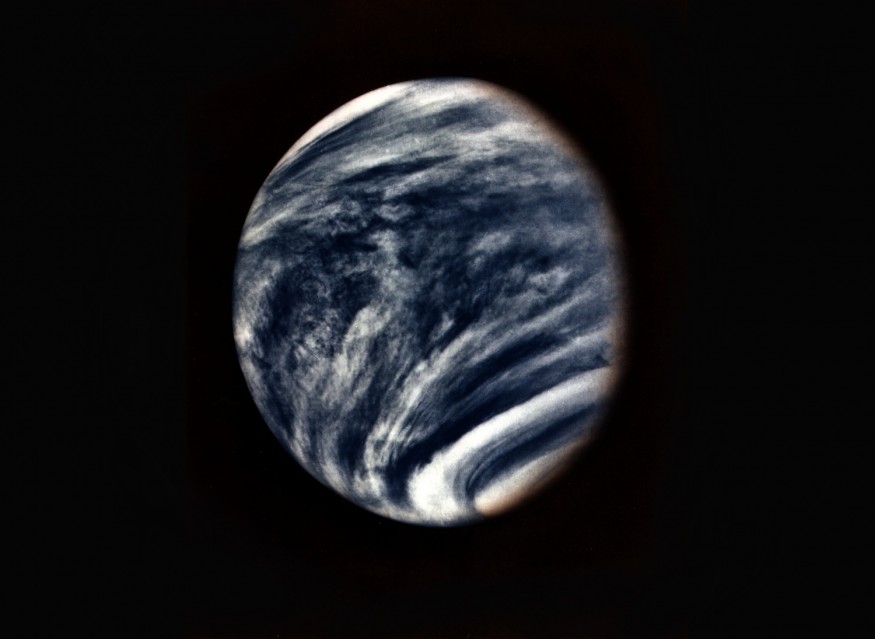
Venus, the second planet nearest to the Sun, may have had the perfect conditions to host life for 2 to 3 billion years before the massive resurfacing event, which triggered greenhouse gases that dominated the atmosphere and caused it to become so dense hot.
In 1978, NASA claimed that their Pioneer Venus spacecraft found evidence that the planet once had shallow oceans that proves previous beliefs it was once an Earth-like planet. Since then, scientists have been interested in investigating the planet's surface and its atmosphere to learn how it transitioned from a habitable planet into the hot, hellish place it is today.
This picture of Venus was captured by the Mariner 10 spacecraft during its approach to the planet in early 1974
Venus May Have Supported Life in the Past
NASA's Goddard Institute for Space Studies shared in 2019 a series of five simulations showing what the environment of Venus would have looked like based on different water coverage, Space.com reported.
Researchers said in a statement via Europlanet Society that all five simulations suggest Venus maintained stable temperature ranging from 68 to 122 degrees Fahrenheit (20-50 degrees Celsius) for about 3 billion years. That means the major resurfacing event may be responsible for the planet's transformation.
With a stable temperature and environment, it is possible that Venus would have been able to support water and allow life to emerge. Researchers also claim that if the resurfacing event did not happen, Venus would have still been habitable until this day. But the resurfacing event happened and triggered a series of events that caused the release of greenhouse gases.
DAVINCI+ and VERITAS: Searching Evidence of Life on Venus
As scientists try to look for evidence of life on Venus, The Sun reported that NASA is sending missions to break through the planet's atmosphere by the end of the decade. These two missions are dubbed DAVINCI+ and VERITAS, which are tasked to collect information and data about Venus' atmosphere to gain further insights about the hottest planet in the Solar System.
DAVINCI+ mission principal investigator Dr. James Garvin told The Sun that the quest for habitability is part of the space agency's framework. They can all dare hope to find promising results.
So, how will each mission help each other in the search for life on Venus? Here's what NASA says:
DAVINCI+
DAVINCI+ stands for Deep Atmosphere Venus Investigation of Noble gases, Chemistry and Imaging. Its purpose is to measure the composition of Venus' atmosphere to know how it formed and evolved. It will use a decent sphere to make precise measurements of noble gases and other elements.
Moreover, it will send back high-resolution images of the unique geological features on Venus called "tesserae" that may be comparable to the continents on Earth. DAVINCI+ is set to in 2029 and will be the first US-led mission to the atmosphere of Venus since 1978. Astronomers hope that it could reshape the understanding of the formation of a terrestrial planet in the Solar System.
VERITAS
VERITAS is short for Venus Emissivity, Radio Science, InSAR, and Spectroscopy which will map the surface of the planet to determine its geological history and understand why it developed differently from Earth.
VERITAS will orbit Venus with a synthetic aperture radar that will chart surface elevations, create a 3D reconstruction of its topography, and confirm whether plate tectonic movements and volcanism are still active. Also, it will map infrared emissions to identify rock types and determine whether active volcanoes on the planet release water vapor into the atmosphere.
Read also: Life on Venus: Volcanic Activities Might Explain the Presence of Phosphine in the Atmosphere
Check out more news and information on Venus in Science Times.












